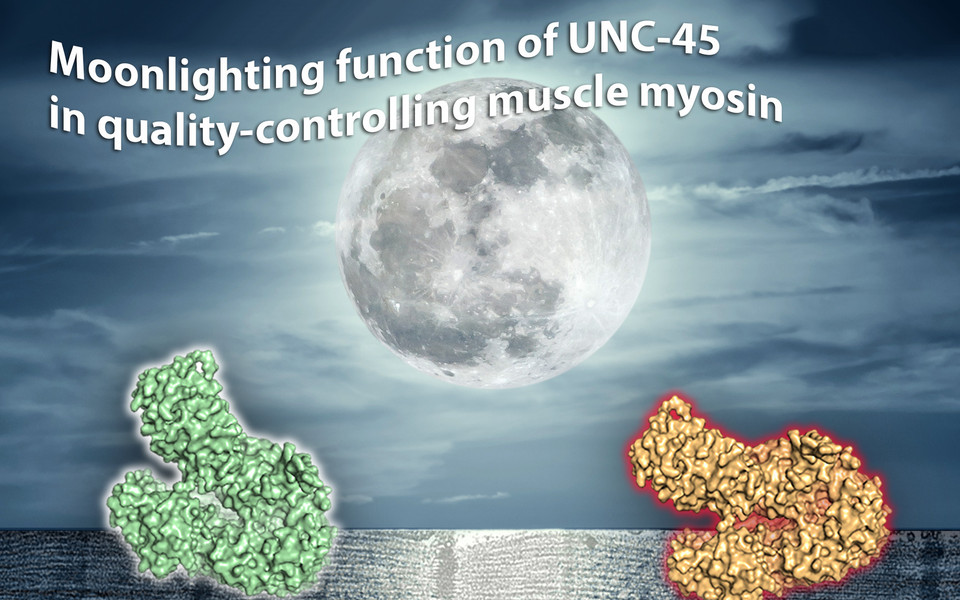
Quality control is important – not only in manufacturing, but also for cells that are constantly producing proteins. The cellular quality-control network assists proteins in maintaining their proper fold and full functionality, keeping the amounts of damaged, aggregation-prone molecules at a minimum. To this end, molecular chaperones help proteins reach their native state, while dedicated protease machines eliminate non-functional proteins that cannot be repaired.
In muscle cells, for example, the motor protein myosin needs to fold properly and assemble into filaments to eventually mediate muscle contraction. The UNC-45 protein plays a key role in this process. UNC-45 forms the core of a myosin assembly line allowing various cellular chaperones to work side-by-side when putting myosin filaments together. In a study published in Nature Communications, the groups of Tim Clausen (Research Institute of Molecular Pathology) and Alexander Dammermann (Max F. Perutz Laboratories, a joint venture of the University of Vienna and Medical University of Vienna) now show that the UNC-45 chaperone also participates in the degradation of myosin.
“Moonlighting”: two distinct roles for the same molecule
The scientists demonstrate a common wisdom known from daily life: it all depends on the partner in crime. Depending on its teammate, UNC-45 can fulfill dual roles when quality-controlling muscle proteins - an ambiguity that in the protein world is referred to as “moonlighting” function. Normally, UNC-45 collaborates with general chaperones to promote myosin maturation. The current study now shows that UNC-45 also has a “dark” side. The myosin chaperone can team up with the UFD-2 ubiquitin ligase, a component of the protein degradation system in the cell, marking client proteins for degradation by the proteasome. Dammermann explains: “Using the nematode worm C. elegans as a model system, we show that UFD-2 is not required for the regulation of UNC-45 levels, as had previously been proposed. Instead, the UFD-2 ligase appears to target unfolded peptide stretches of damaged proteins, explaining its vital role in the protein-quality-control system”.
Most strikingly, the authors show that the UNC-45 chaperone is not a substrate, but rather a co-factor of UFD-2. “Without doubt”, Clausen points out, “the discovered death-tagging system, in which a degradation enzyme utilizes a specific molecular chaperone as Substrate Positioning System, has exciting implications for how to find and deal with problematic proteins in the cell.” Both UNC-45 and UFD-2 are known to be critical for muscle development and function in mammals. The scientists therefore believe that the described function in the quality-control of muscle proteins may help to understand protein misfolding defects connected with skeletal and cardiac muscle diseases.
Publication in Nature Communications
Doris Hellerschmied, Max Roessler, Anita Lehner, Linn Gazda, Karel Stejskal, Richard Imre, Karl Mechtler, Alexander Dammermann and Tim Clausen: UFD-2 Is An Adaptor-Assisted E3 Ligase Targeting Unfolded Proteins. Nature Communications, 2018.